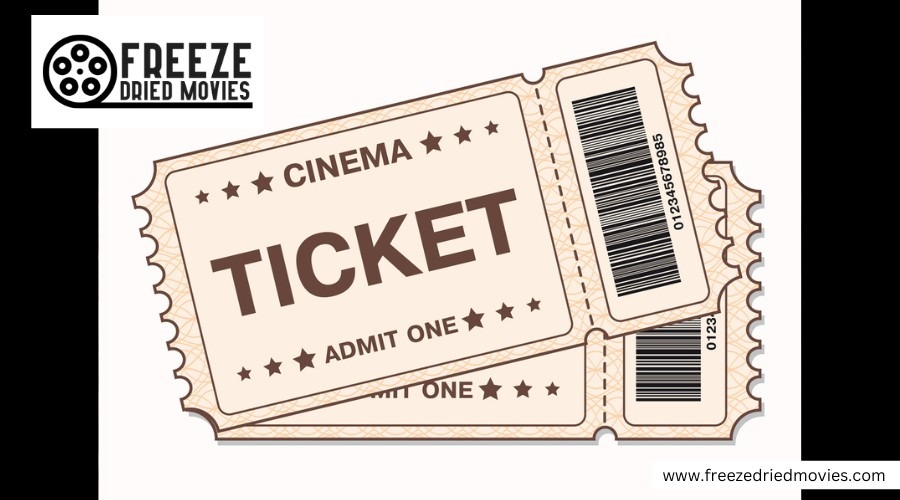How Much Did a Movie Ticket Cost in the 1990s?

In the 1990s, you'd pay between $4.22 and $7.18 for a movie ticket. Prices started at $4.22 in 1990 and increased steadily at 3.1% annually throughout the decade. By 1995, the average ticket cost $5.41, and by 2000, it reached approximately $7.18. This represents a 70% increase over the decade, yet these prices were still markedly more affordable than today's average of $9.53. Discover how these economics shaped Hollywood's golden era.
Key Takeaways
- In 1990, the average movie ticket price was $4.22.
- Ticket prices increased steadily at 3.1% annually throughout the 1990s.
- By 1995, the average movie ticket price had climbed to $5.41.
- "Titanic" cost audiences approximately $4.86 per ticket in 1997.
- By 2000, the average ticket cost reached approximately $7.18, a 70% increase from 1990.
The Average Movie Ticket Price Throughout the 1990s
Throughout the 1990s, movie ticket prices followed a predictable upward trajectory that reflected the broader economic trends of the decade. In 1990, you'd pay just $4.22 for the average movie ticket—a bargain by today's standards.
This cost increased steadily at about 3.1% each year, following the exponential function A = 4.22(1.031)^t, where t represents years since 1990. By mid-decade in 1995, the average price had climbed to $5.41, showing the consistent year-over-year growth.
When the decade closed in 2000, the inflation-adjusted average ticket cost had risen to approximately $7.18. That's a 70% increase from 1990—a significant jump that outpaced many other consumer goods during this period.
The actual average ticket price in 1995 was $4.35, reflecting the price stabilization that characterized movie-going in the 1980s and 1990s compared to earlier decades.
Comparing 1990s Ticket Prices to Today's Costs (Adjusted for Inflation)
A simple glance at inflation-adjusted figures reveals how movie ticket prices have evolved since the 1990s. When you consider that the average movie ticket cost just $4.22 in 1990, today's box office prices represent a significant increase in the cost of a movie experience.
Using the exponential growth model of approximately 3.1% annually, ticket prices reached about $9.53 by 2016. This growth exceeds standard inflation rates, meaning that movies have become relatively more expensive over time.
When adjusted for inflation, you're paying considerably more at the theater today than your 1990s counterpart did. This trend explains why many consumers feel the pinch when visiting the cinema, as the increasing cost has outpaced general consumer price increases.
This steep increase stands in stark contrast to the 1940s when 25 cent tickets made cinema an affordable entertainment option for the majority of Americans.
Box Office Trends and Revenue During the 1990s Era
The 1990s represented a golden era for Hollywood's box office performance, with studios enjoying substantial revenue growth despite relatively affordable ticket prices. If you check movie industry data sites, you'll see the total box office numbers climbed impressively during this period when ticket prices averaged just $4.22 in 1990. This was a significant increase from the 1960s average prices which ranged from $0.70 to $1.42 throughout the decade. The total tickets sold during the year you were born in the 1990s likely contributed to this upward trend, with domestic box office revenues expanding as prices increased by 3.1% annually.
This exponential growth model explains how the movie of the year in any 1990s season could generate massive profits even with tickets costing less than half of 2016's $9.53 average. The industry capitalized on this sweet spot—accessible pricing that still delivered robust revenue growth.
Top-Grossing Films of the 1990s and Their Ticket Prices
Top-grossing films of the 1990s demonstrated that blockbuster success didn't require today's premium ticket prices. When "Titanic" became the decade's top-grossing movie in 1997, the average cost of admission was just $4.86 - calculated using the price index formula of $4.22(1.031)^7.
You'd have paid considerably less to see blockbusters compared to today's $9.53+ tickets. Each movie released throughout the decade benefited from high ticket sales despite lower prices. "Jurassic Park," "The Lion King," and "Star Wars: Episode I" all achieved tremendous box office success while tickets remained under $5 on average.
This economic reality shaped Hollywood's approach to filmmaking, as studios could achieve profitability with greater attendance rather than relying on premium pricing strategies common today.
Economic Factors Influencing Movie Prices in the 1990s
Several economic factors shaped the relatively low movie ticket prices throughout the 1990s. When you visited your local box office, you'd typically pay around $4.22 in 1990, with prices rising at a steady 3.1% annually. The National Association of Theatre Owners tracked this growth, noting that even as ticket prices climbed, Americans still flocked to theaters.
This modest inflation rate meant that by 1999, you'd spend just over $5.50 for entry, while studios were raking in Millions Of Dollars from blockbusters. The Association of Theatre Owners attributed this controlled growth to competition from home video and cable TV. Films like "The Snake" and other mid-budget productions remained accessible to average viewers while theaters maintained profitability through concession sales rather than dramatic ticket price increases.
The Theater Experience and Value Proposition in the 1990s
Movie theaters in the 1990s offered a unique value proposition that kept Americans coming back despite rising ticket prices. While the average ticket cost $4.22 at the decade's start, prices climbed steadily at 3.1% annually throughout the United States. Yet you'd still line up around the block when blockbusters like "Star Wars: The Phantom Menace" premiered.
The booming surround sound playing your favorite theme song, the collective gasps during plot twists, and the escape from everyday worries of Wall St fluctuations. Though ticket prices followed the exponential function A = 4.22(1.031)^t, the memories created would last forever. By comparison, today's $9.53 average ticket (as of 2016) makes those 90s prices seem like an incredible bargain.


